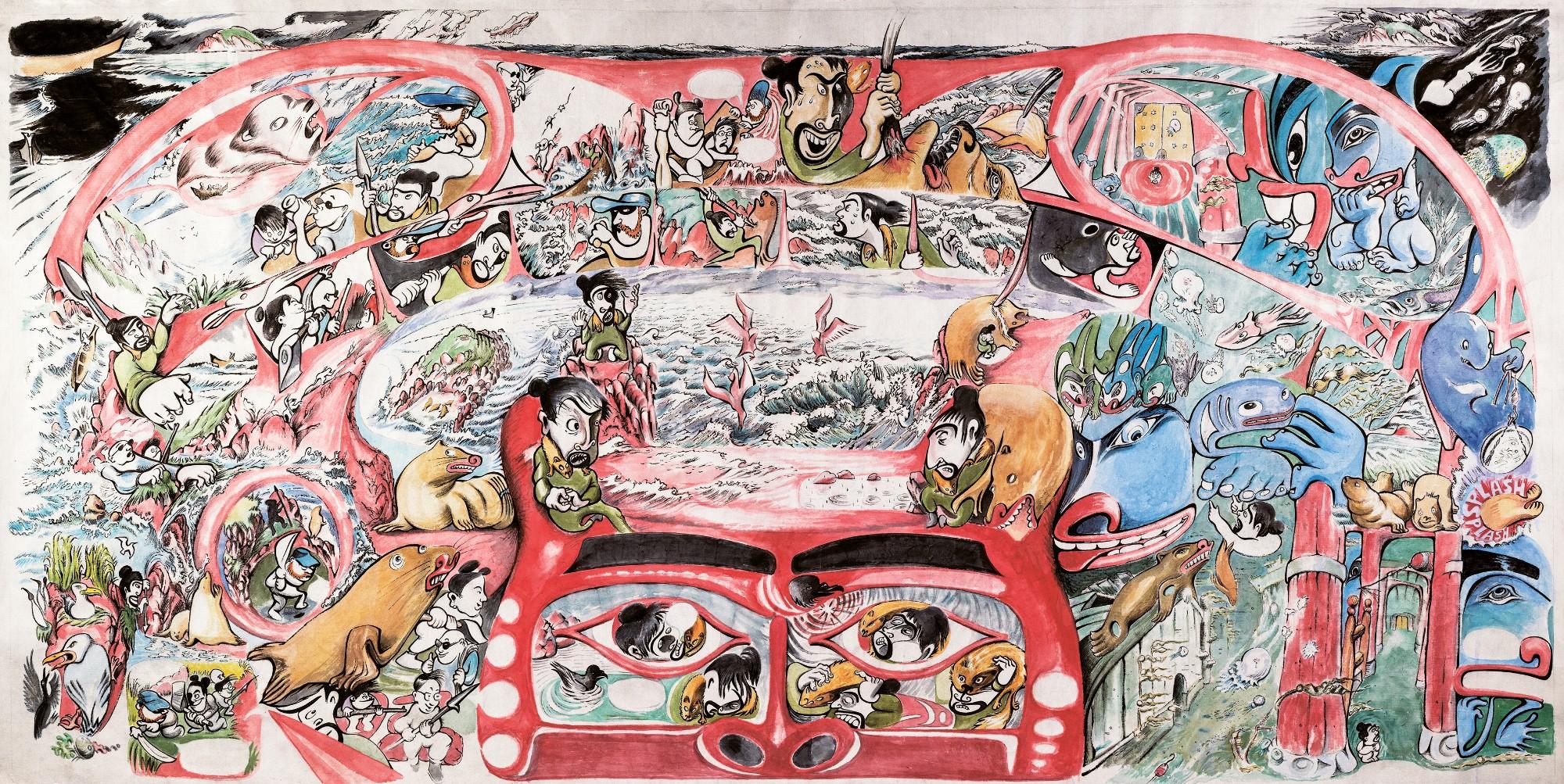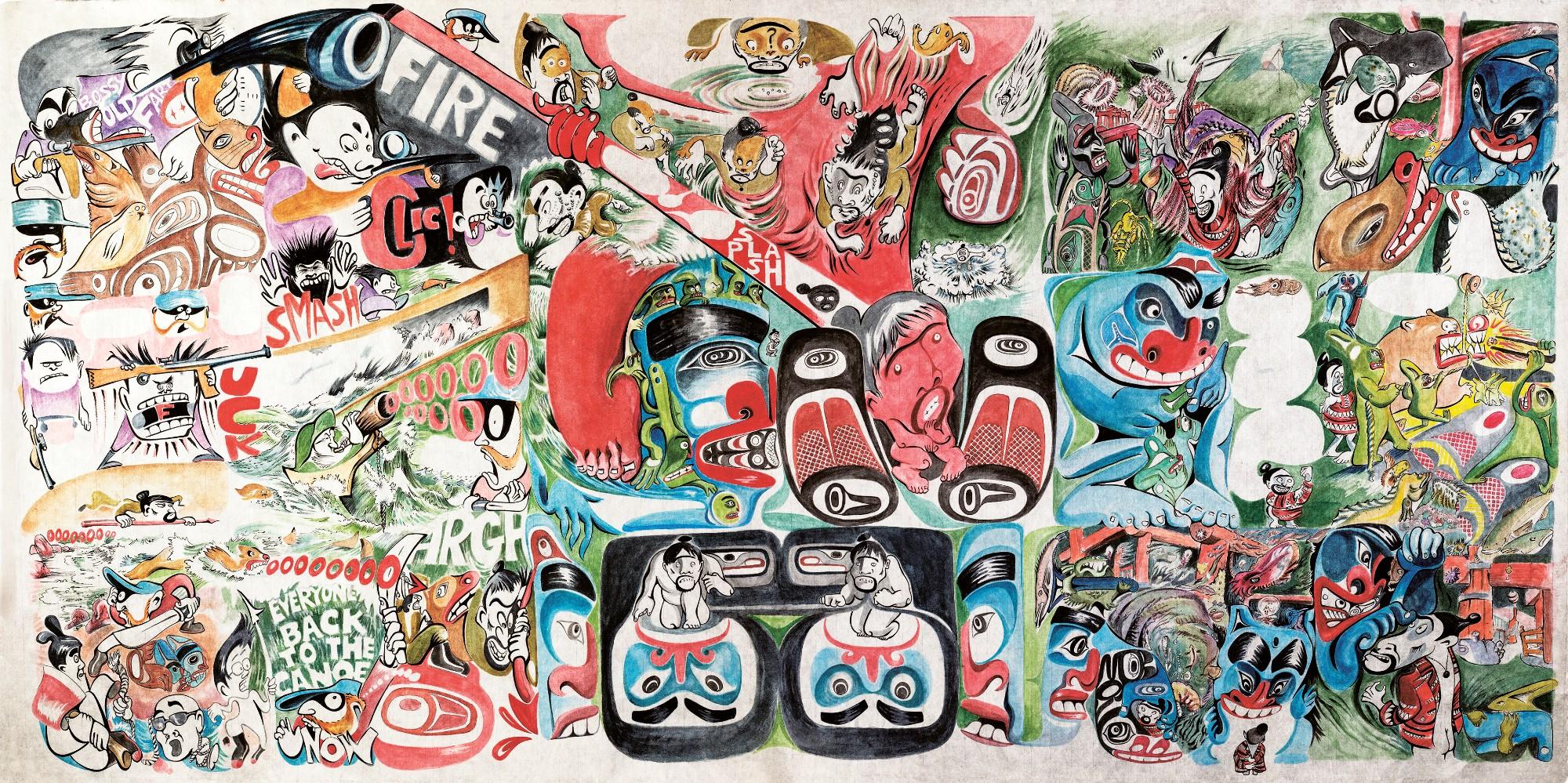ABOUT THE ARTIST
Michael Nicoll Yahgulanaas is the creator of Haida manga: a distinctive fusion of pop culture, Indigenous iconography, and Asian graphics. His playful practice has exhibited at major institutions and is in the permanent collections of the Metropolitan Museum of Art, the British Museum, the Vancouver Art Gallery, the Museum of Anthropology in British Columbia, and the Seattle Art Museum. He was the first-ever Artist-in-Residence at the American Museum of Natural History.
Michael’s previous title Red: A Haida Manga (2009) was an Amazon Top 100 book, while Hachidori (2005) secured a single-day top three sales ranking on Amazon Japan. The Flight of the Hummingbird (2008) has been published in numerous editions and languages and commissioned as an opera. A Tale of Two Shaman (2001), a richly illustrated book written in English and three Indigenous language dialects, was reprinted in 2017. Michael’s complex and diverse art practice is documented in The Seriousness of Play by Nicola Levell. In 2017, Michael was invited to work with a major architectural firm on the design of three high rise towers in Vancouver, BC.
ABOUT SEATTLE ART MUSEUM
As the leading visual art institution in the Pacific Northwest, SAM draws on its global collections, powerful exhibitions, and dynamic programs to provide unique educational resources benefiting the Seattle region, the Pacific Northwest, and beyond. SAM was founded in 1933 with a focus on Asian art. By the late 1980s the museum had outgrown its original home, and in 1991 a new 155,000-square-foot downtown building, designed by Venturi, Scott Brown & Associates, opened to the public. The 1933 building was renovated and reopened as the Asian Art Museum in 1994 and will reopen on February 8, 2020 following an extensive renovation and expansion. SAM’s desire to further serve its community was realized in 2007 with the opening of two stunning new facilities: the nine-acre Olympic Sculpture Park (designed by Weiss/Manfredi Architects)—a “museum without walls,” free and open to all—and the Allied Works Architecture designed 118,000-square-foot expansion of its main, downtown location, including 232,000 square feet of additional space built for future expansion. The Olympic Sculpture Park and SAM’s downtown expansion celebrated their tenth anniversary in 2017.
From a strong foundation of Asian art to noteworthy collections of African and Oceanic art, Northwest Coast Native American art, European and American art, and modern and contemporary art, the strength of SAM’s collection of approximately 25,000 objects lies in its diversity of media, cultures, and time periods.































